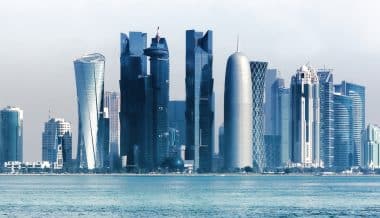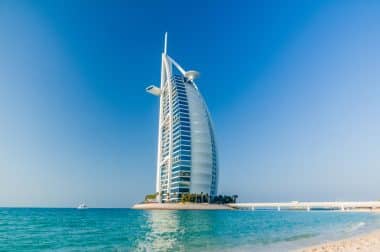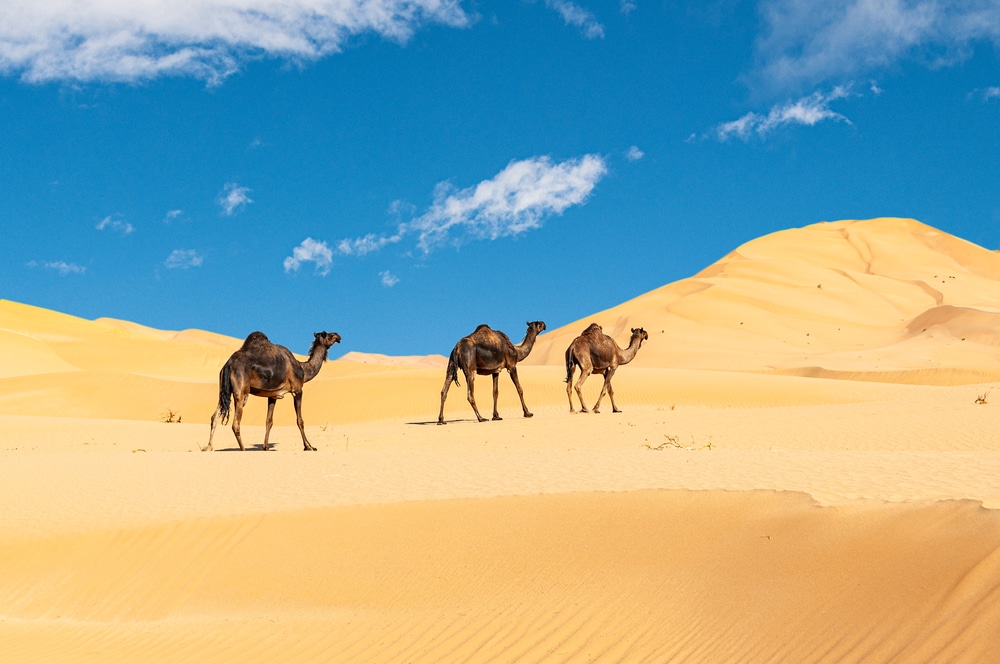Great weather all year round, luxurious hotels and a very special hospitality. A holiday in the Gulf States also means a meeting of opposites. On the one hand, modern skyscrapers but also traditional customs. Geographers usually include the states on the Arabian Peninsula that are located on the Persian (Arabian) Gulf, i.e. primarily Kuwait, Saudi Arabia, Bahrain, Qatar, the United Arab Emirates and Oman. In a broader sense, Iraq and Iran are also among the Gulf States.
Why is it worth vacationing in the Gulf States?

Tradition and modernity are close together in the Gulf States. Images of cities like those from 1001 Nights certainly appear in people’s minds, while at the same time skyscrapers in metropolises such as Doha, Riyadh, Dubai or Abu Dhabi are growing into the sky. Sometimes there is already talk of the “land of the day after tomorrow”. Between desert, oases, mountains and sea, the countries of the Arabian Peninsula surprise the guest with a kaleidoscope of fascinating impressions. Be it as part of a cruise, on the back of a camel or on a journey to the cultural treasures of the Orient – unforgettable impressions are guaranteed. Shaped by Islam, the Gulf states have come to extreme wealth through oil and natural gas. Today, countries are opening up more and more to tourism.
Geography and nature
The desert forms the defining element on the entire Arabian Peninsula. In the southeast, on the border between Saudi Arabia and Oman, the Rub-al-Khali is the largest pure sand desert in the world. Rivers, on the other hand, are virtually non-existent and rainfall is also more than sparse except for the Dhofar in Oman, which lies in the monsoon’s area of influence. In the west and south, mountains form a natural barrier. Agriculture is limited to a few oases and mountain regions. However, wheat is now also blooming in circular artificial fields in the desert. The huge oil and natural gas deposits are located directly on the Persian Gulf and offshore under the seabed.
Countries, culture and people of the Gulf States
In Mesopotamia, today’s Iraq, civilization began and the first writing was created. Despite its impressive testimonies of the past, Iraq no longer plays a role today due to the precarious security situation. In contrast, Saudi Arabia, which has been closed for a long time, is opening up more and more to tourism and at the same time has lost some of its horror. The United Arab Emirates, Qatar and Bahrain, on the other hand, have been making a name for themselves for some time; Dubai, Abu Dhabi and Doha in particular are attracting more and more tourists. Even more stuck in old traditions, Oman presents itself as a cosmopolitan “fairytale land”. The country was once famous for its gifted seafarers, who sailed to the coasts of East Africa with their traditional dhows to trade there. Despite the advent of modernity and the fabulous wealth, the inhabitants of the Gulf States continue to hold on to their traditions, which manifest themselves not least in the numerous festivals and holidays.
Places to visit for a holiday in the Gulf States

Dubai is the gateway to the Gulf States for many and has become one of the most visited cities in the world. The largest city in the United Arab Emirates has so many attractions to offer that holidaymakers could easily spend several months there, be it the Burj Arab, the Burj Khalifa, the Dubai Mall or the Dubai Marina. From here it is not far to Abu Dhabi, where you can definitely marvel at the Sheikh Zayed Mosque. But the Louvre Abu Dhabi has also become a magnet for visitors. In Qatar and Doha, the Museum of Islamic Art invites you to visit. Shoppers stroll through the Souk Waqif and haggle for the coveted goods.
A stopover at the National Museum should also not be missed during a stay in Qatar. Highlights of a trip through Oman are the old oasis city of Nizwa, the numerous old mud castles of the country and the colorful capital Muscat with the Great Sultan Qaboos Mosque, the al Alam, Palace and the Mutrah Souk. Excursions lead to the wild Oman mountains and the vastness of the desert. In Kuwait, the water towers function as a landmark that can be seen from afar. In Saudi Arabia, the holy sites of Mecca and Medina may only be entered by Muslim pilgrims, but the huge kingdom has much more to offer. On the one hand, there is the rocky desert landscape in which the Nabataeans left behind such an impressive site as Madaʿin Salih, the same people who carved the unique monumental tombs in Petra, Jordan, into the rock. A newer monument of the first rank is the glass cube in the desert of Al Ula, which reflects the surrounding desert landscape. The port city of Jeddah on the Red Sea surprises with the world’s highest water fountain. In small Bahrain, the Qalʿat al-Bahrain fortress and the Al-Fateh Mosque captivate visitors.
Food and Drink in the Gulf States
Hospitality is a top priority in all Gulf countries and what better way to enjoy it than by tasting the tasty oriental food and drinks. Tender lamb is always on the menu: vegetables are often cooked together with the meat and eaten together with the traditional flatbread. For the Bedouins, the camel has always played a central role. They have developed their own food culture. More than camels, they prepared the meat of sheep and goat in many ways. Coffee, buttermilk and dates are an integral part of Arabic cuisine. Due to the old trade relations with India, numerous fragrant spices characterize oriental and Arabic cuisine. The variety of colors is almost stunning. Tea, often black tea with spices, is drunk on many occasions and offered to the guest.


